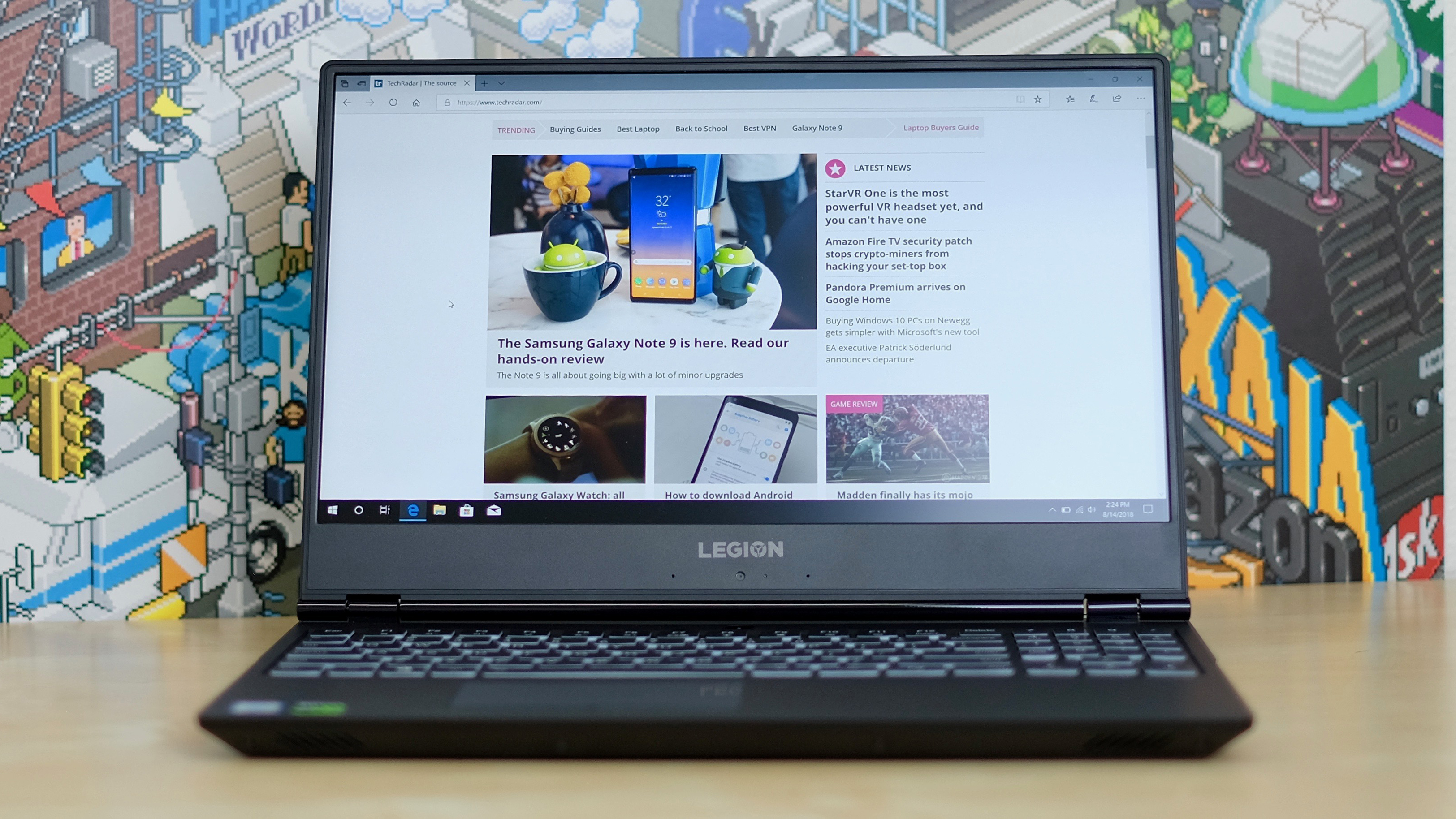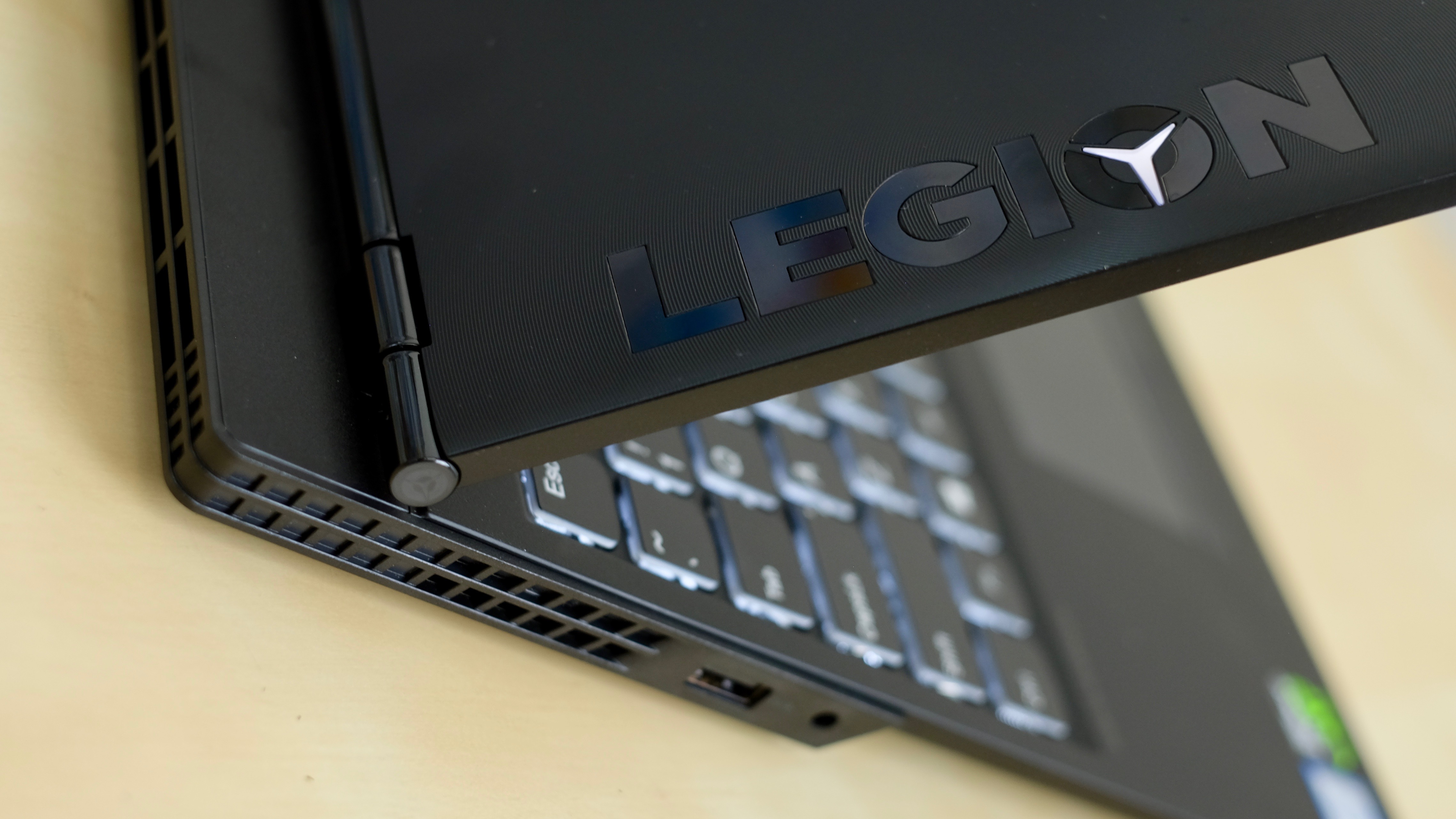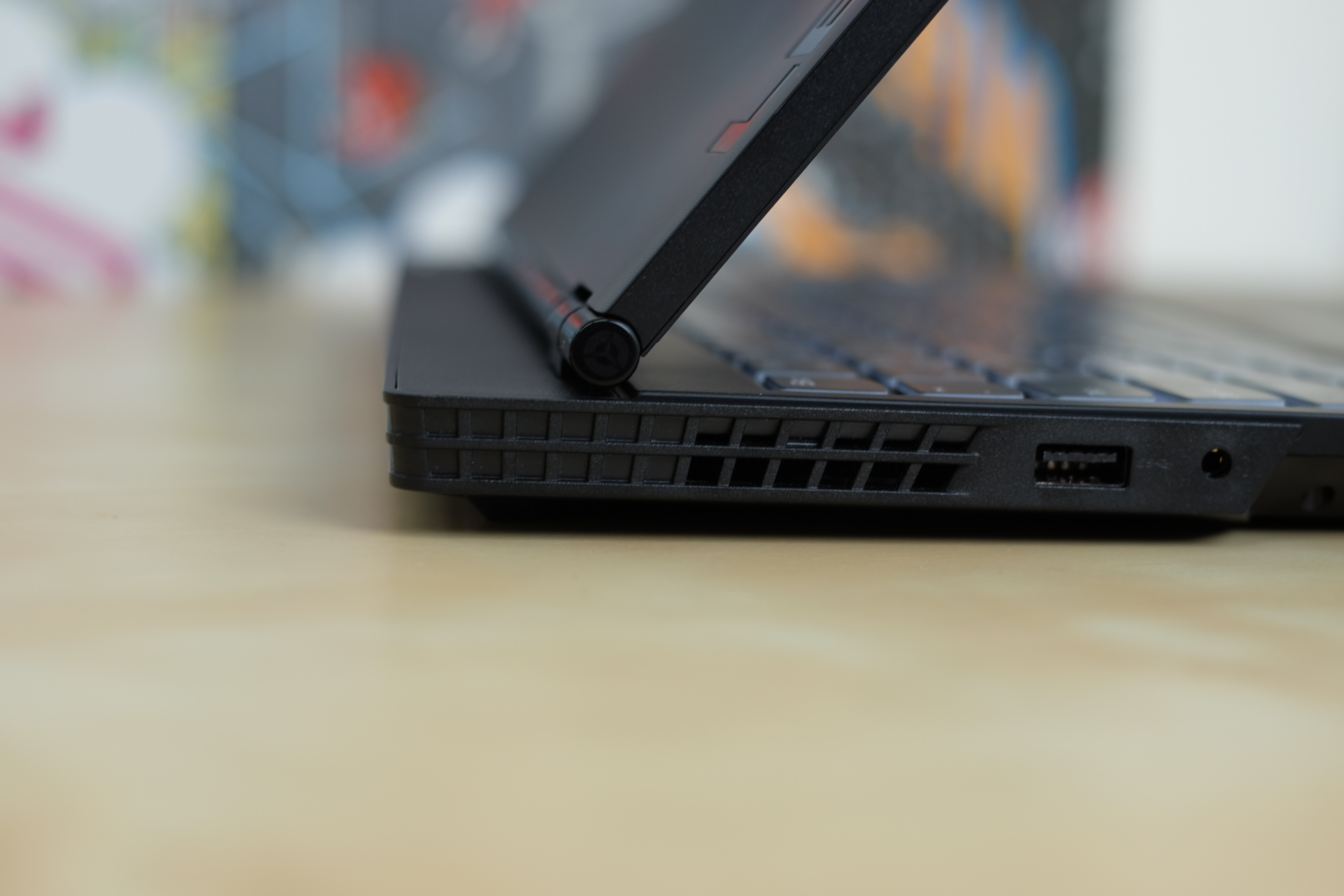TechRadar Verdict
Users of the Lenovo Legion Y530 will find that it gets the job done for gaming and general use, and that’s about it.
Pros
- +
Affordable
- +
Unique design
- +
Acceptable battery life
Cons
- -
Disappointing speakers
- -
Display lacking overall
Why you can trust TechRadar
The Lenovo Legion Y530 is the slightly smaller, slightly less powerful gaming laptop when compared to the rest of the Lenovo Legion lineup. The Y520 line is larger and starts at a lower price point, and uses that extra space for beefier components. The Y720 is more expensive, and follows the Y520’s approach of cramming faster components into the housing.
Not to mention, the new Y530 looks unlike either model. It ditches the mundane black and red housing found on the rest of the Legion line, opting instead for a black and white look. Then there’s a unique hinge that doesn’t line up with the back of the Y530’s housing, thus allowing for an even slimmer design.
With configurations starting at $749 (about £589, AU$1,035), the Y530 is an affordable entry level gaming laptop that competes with the likes of Acer’s Nitro 5 and Dell’s G3 15 – only with, perhaps, a little bit more style.

Here is the Lenovo Legion Y530 configuration sent to TechRadar for review:
CPU: 2.3GHz Intel Core i5-8300H (quad-core, 8MB cache, up to 4.00GHz with Turbo Boost)
Graphics: Intel UHD Graphics 630; Nvidia GeForce GTX 1050 Ti (4GB GDDR5)
RAM: 8GB DDR4 (2,666MHz)
Screen: 15.6-inch, FHD (1,920 x 1080) IPS (anti-glare, 250 nit)
Storage: 128GB SSD (PCIe); 1TB HDD (5,400 rpm)
Ports: 1 x USB Type C, 1 x mini DisplayPort, 1 x USB 3.0, 1 x HDMI, 1 x RJ-45, 2 x USB 3.1, 1 x 3.5mm combined audio jack
Connectivity: 802.11 AC (2x2 MIMO) + Bluetooth 4.1
Camera: 720p HD webcam
Weight: 5.1 pounds (2.3kg)
Size: 14.37 x 10.24 x 0.95 inches (365 x 260 x 24.2mm; W x D x H)
Price and availability
Again, the base model Y530 starts at $749 (about £589, AU$1,035). For the purposes of this review, we were sent a slightly more expensive configuration, currently priced at $899 (about £707, AU$1,244).
The difference between the two configurations is limited to a single storage drive (1TB hard drive) and a standard GeForce GTX 1050, compared to the model we are testing with an additional 128GB SSD boot drive and a GTX 1050 Ti.
In the US, Lenovo offers configurations that include an Intel Core i7-8750H,16GB of memory, up to 2TB hard drive and 256GB SSD for around $1,300 (about £1,022, AU$1,799).
In the UK, Lenovo doesn’t offer any customization options, with the Y530 priced at £899. For that price, you get the same configuration we tested, save for a GTX 1050 (not a 1050 Ti) and a 300 nit display, as opposed to a 250 nit.
Sign up for breaking news, reviews, opinion, top tech deals, and more.
For those in Australia, you’re given more customization options. The base configuration starts at AU$1,452 for the same model we are testing, and maxes out at AU$1,743 with an Intel Core i7-8750H, 16GB of memory, and a 300 nit display.
All in all, those prices compare favorable with the Nitro 5, with a starting price of $749 (£899, about AU$1009), and the Dell G3 15, with the same starting price. The most notable differences in the starting point between the three different models is the G3 15 comes with a 128GB SSD in addition to a 1TB hard drive, whereas the Nitro 5 and Legion Y530 only have the 1TB drive.








Design
The first thing you see after unboxing the Legion is that the hinge doesn’t quite look normal. Instead of lining up with the back of the screen lid, as most laptops do, there’s roughly 1-inch of space between where the hinge is found, and where the back of the Legion is found.
Looking at the Y530 from the front with the lid open, it looks just like any other laptop. There’s a full-sized keyboard with number pad – a growing rarity in 15-inch laptops – a trackpad, and a 15.6-inch display that has very scarce bezels surrounding it.
The keyboard is backlit with white lights, and isn’t customizable. The keys are soft, and respond accurately to rapid presses while typing or gaming. The trackpad is smooth and handles interaction without any hiccups, but we suggest finding a nice gaming mouse and using it for everyday desktop tasks along with intense gaming sessions.
As for portability, the Y530 is a respectable 5.1 pounds (2.3kg), and measures 14.37 x 10.24 x 0.95 inches (365 x 260 x 24.2mm). Despite being over the 5 pound mark, the Y530 is deceivingly lightweight and comfortable to carry around.
On either side of the housing you’ll find a USB 3.1 port, with a 3.5mm combo audio jack found on the left side. Where are the rest of the ports? That’s where the back of the laptop comes in.

An intriguing hinge
The rear of the Legion Y530 is home to two cooling vents and a myriad of ports. From left-to-right, you’ll find a USB-C port, mini DisplayPort, USB 3.0, HDMI, Ethernet and a charging port.
With nearly all ports on the back of the housing, the end result is a cleaner look when you have multiple devices plugged into the Y530. Instead of cables coming out of each side, everything can be organized neatly behind the display. Then again, we can see this arrangement being problematic for those who work on a small desk where more ports on the side would be beneficial.
Furthermore, the hinge allows for the display on the Y530 to open and bend back to 180 degrees. Keep in mind, the Y530’s display isn’t a touchscreen, and this orientation fails to trigger any sort screen rotation in Windows 10. We can’t think of any real reason why the screen can lay flat like this, other than ‘because it can.’

Display
It’s not often we see a laptop manufacturer list a display’s brightness, measured in nits, on the specification sheet. Yet with the Legion line, Lenovo lists the nits for every model we looked at.
The Y530 we reviewed has a 250 nit display, according to the spec sheet. Eventually, Lenovo will release a 144Hz panel with 300 nits, but as of this review that model is not yet available.
Why is this important? Glad you asked. We find the display on the Y530 to lack in overall brightness and color quality. Even with brightness turned all the way up, colors look overly muted and leave us wanting more. Perhaps you’ll want to hold out for the 144Hz version of this laptop on account of this.
- 1
- 2
Current page: Introduction, price, design and display
Next Page Performance, battery life, features and verdict